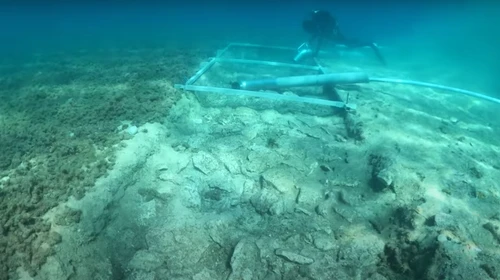Neolithic people, according to researchers, used the 7,000-year-old road that is now submerged under the water.
The drowned remains of a 7,000-year-old road that once connected an ancient artificial landmass to the Croatian island of Korčula have been found by archaeologists. The Hvar, an extinct maritime society that lived in this region during the Neolithic Era, left behind the submerged road and various other artifacts.
According to a statement from the university, Igor Borzić, a researcher at the University of Zadar's Archaeology Department who was looking into sites on land, discovered "strange structures" at a depth of around 15 feet in the Bay of Gradina, on the western coast of Korčula. The university published additional video of the submerged passage, which was formed of stacked stones and was around 12 feet broad, over the weekend.
In a statement published on Facebook on May 8, the University of Zadar stated that researchers shocked themselves by discovering remains at the submerged neolithic site of Soline on the island of Korčula. They specifically found a path connecting the coast of the island of Korčula with the drowned prehistoric settlement of the Hvar culture beneath the layers of sea muck.
The researchers also found fragments of millstones, flint blades, and stone axes among the underwater remains. The relics provided information on the enigmatic Hvar peoples, who arrived in the northeast Adriatic Sea some 7,000 years ago and resided on its islands and beaches.
According to the university, various experts and organizations are working together on the underwater research, which is being directed by archaeologist Mate Parica, who has been studying the location for a while.
Underwater excavations have uncovered numerous Hvar remains and artifacts, including a village built atop a man-made island. The announcement claimed that the recently found route connected this island to the shore of Korčula. In addition to ceramics and decorations, the Hvar people also left behind signs of subsistence farming and burial customs.
Archaeologists are excavating historic sites on land in addition to underwater studies, such as a cave in the adjacent town of Vela Luka that has been inhabited for at least 19,000 years by numerous cultures, including the Hvar.







